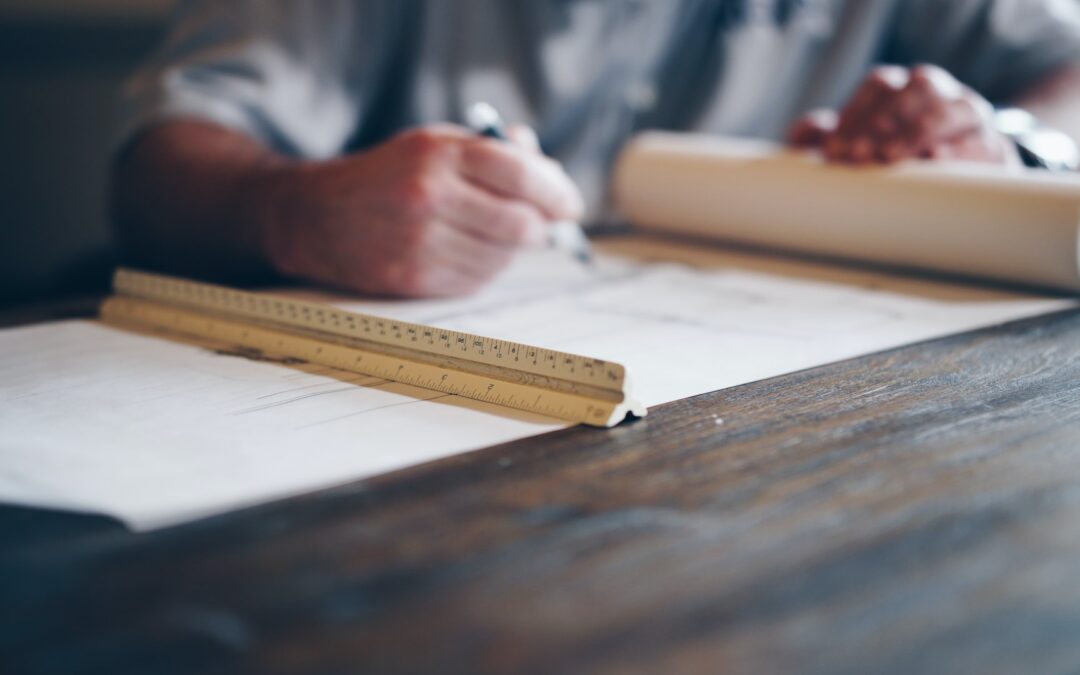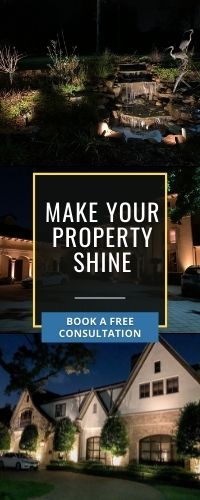Lighting the outside of your home is a great way to increase both curb appeal and safety. Placed correctly, outdoor lighting can accentuate the beauty of your landscaping, create a calming oasis of your outdoor living areas, and provide you peace of mind that your property is secure. Planning your outdoor lighting before diving right in is essential when considering both aesthetics and costs.
Deciding where to place the lights and what type of lighting to use is a delicate balance, though: too little light might leave walkways treacherous or make patios unusable once the sun goes down, while too much light might make your driveway feel more like a runway or inadvertently create light pollution. So how do you coordinate your outdoor lighting spaces to achieve a balance of function and beauty?
Planning Your Outdoor Lighting Design
First, it’s important to determine what areas must be well-lit for safety reasons. For example, you want to make sure any steps or walkways have enough light for visitors to safely navigate their way to your door. Doors and windows, too, should have lights to ensure you can easily see activity on your property and to discourage criminals.
Once you’ve decided on the areas that absolutely require lighting, you can move on to areas that you want to draw attention to such as an architectural or water feature, outdoor living spaces like a pool or firepit area, or a beautiful tree.
It can sometimes be helpful to walk your property at night with a flashlight to see if there are any areas that need additional lighting or that you want to highlight or any areas that currently have too much light.
Types of Lighting
Once you’ve chosen your outdoor lighting spaces, the next step is to think about different types of lighting to use in those spaces. The following are a few types of lighting to consider:
- Uplights: fixtures placed low to the ground and angled upward can create interesting shadows and produce either a dramatic effect or a soft glow. Uplighting is often used on trees, shrubbery, or water features or to add depth to a garden.
- Downlights: out-of-the-way lighting from above provides a steady glow, adding warmth and vibrance. Downlighting is great for outdoor seating areas.
- Warm: less intense lighting used to foster a welcoming and relaxing atmosphere, such as in a swimming pool area or patio.
- Cool: white lighting generally used for security or utilitarian purposes.
- Moonlighting: soft lights carefully placed high up in trees or other places on your property to mimic the wonderful light of the moon and add drama and whimsy.
Working with a Designer
Striking just the right balance of form and function to transform your home with outdoor lighting can be an exciting but daunting process. If you’re not quite sure where to start to bring your vision to life, working with a professional lighting designer can help. At Houston Lightscapes, we have over 30 years of experience in the landscape lighting industry, helping our clients see their dreams realized, no matter how big or small the property.
We are proud to offer a free, no-obligation consultation where we walk your property with you and discuss your ideas and options. After the consultation, we give you a detailed, customized proposal. Once we’ve guided you through the process of determining the best type of lighting and the perfect locations, we also provide maintenance options to ensure the safety and functionality of your new lighting system for years to come. Please give us a call at (713) 461-3600 to set up your free consultation today. We are ready to help you make your vision a reality.


